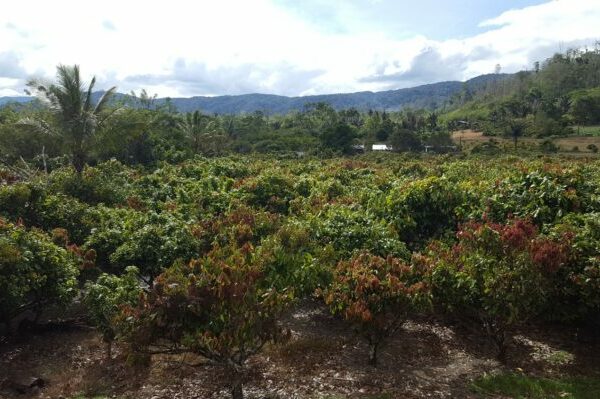Agroecologists from Göttingen University compare pesticides, fertilisers, manual pollination and farming costs in Indonesia
Cocoa is in great demand on the world market, but there are many different ways to increase production. A research team from the University of Göttingen has now investigated the relative importance of the use of pesticides, fertilisers and manual pollination in a well replicated field trial in Indonesian agroforestry systems. The result: an increase in both cocoa yield and farming income was achieved – not by agrochemicals, but by manual pollination. The study was published in the journal Agriculture, Ecosystems and Environment.
Cocoa requires cross-pollination by insects to produce fruit. It is unclear how to encourage natural pollination by tiny midges, flies or wasps: in fact, the true identity of the main pollinators has yet to be discovered. Under natural conditions, more than 90 percent of flowers are not visited by insects and do not develop fruit. These results clearly show that traditional agricultural intensification with agrochemicals is not always the best way forward.
Working together with colleagues and students of the Indonesian University of Tadulako of Palu, the scientists found that hand pollination increased the yield of cocoa trees by 161 percent. After deducting the costs of manual pollination, this meant a 69 percent increase in income for small-holder farmers. Using more pesticide and fertiliser did not increase yields.
“Our results show how agroecological intensification can be successful by promoting biological processes or using innovative techniques such as manual pollination,” explains first author Manuel Toledo-Hernández, PhD student in the Department of Agroecology at the University of Göttingen. The work was supervised by Professor Teja Tscharntke, Head of Agroecology, and Professor Thomas C. Wanger, now at Westlake University in China. They add: “Lower harvests due to insufficient pollination have a major effect on many crops in the tropics as well as in temperate latitudes. This should be taken into account much more in future efforts to increase production.”
Read the paper: Agriculture, Ecosystems and Environment
Article source: Göttingen University
Image: Landscape shaped by cocoa cultivation in Sulawesi (Indonesia). Credit: M Toledo, University of Göttingen






